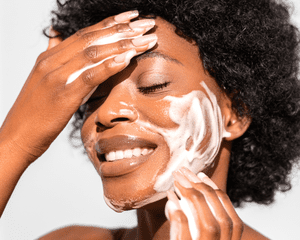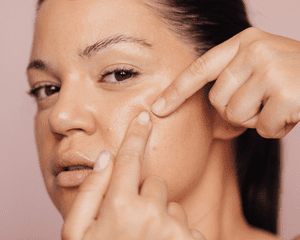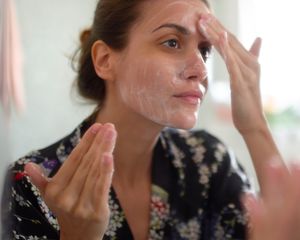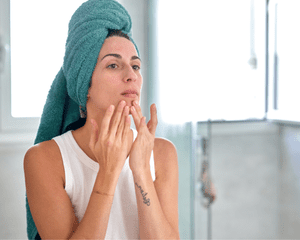:max_bytes(150000):strip_icc()/amoxicillin-630e95c281ab49ab9ff30dfc0f69568f.jpg)
Getty+BYRDIE
Amoxicillin is a popular antibiotic used to treat common ailments ranging from ear infections to urinary tract infections. What do these infections have to do with the most recent pimple we're battling? Turns out amoxicillin could be an effective treatment for cystic acne, as well. While it may not be the first line of action against breakouts and blemishes, there are certain cases when snagging a prescription could be your best bet.
We tapped the experts for all the insight on amoxicillin as an acne treatment. Read on to see if it's an option worth considering.
Meet the Expert
- Joshua Zeichner, MD, is a board-certified dermatologist and Director of Cosmetic and Clinical Research in Dermatology at Mount Sinai Hospital in New York City.
- Michele Green, MD, is a board-certified dermatologist in New York City.
- Morgan Rabach, MD, is a board-certified dermatologist, founder of LM Medical, and assistant professor of Dermatology at Mount Sinai Hospital in New York City.
Amoxicillin
Type of Ingredient: Antibiotic
Main Benefits: Most commonly used to treat upper respiratory bacterial infections and urinary tract infections; sometimes used as a second-line treatment for acne.
Who Should Use It: Those dealing with moderate to severe inflammatory acne, and who can't take the tetracycline class of antibiotics (minocycline, doxycycline) because of allergy or pregnancy.
How Often Can You Use It: It's usually prescribed twice daily for acne, though as with any antibiotics for acne, it should be discontinued after three to four months of use.
Works Well With: Oral antibiotics are generally paired with topical medications that contain benzoyl peroxide and topical retinoids, says Zeichner.
Don't Use With: Other topical antibiotics, which can increase the likelihood of developing bacterial resistance.
What Is Amoxicillin?
Amoxicillin is an antibiotic that's part of the penicillin family, which covers a wide range of different bacteria. Most commonly it's used to treat upper respiratory bacterial infections, as well as UTIs, and is best used for short periods, notes Rabach. So, how can it play a role in improving your skin? The first thing to keep in mind is that generally speaking, any type of oral antibiotic should only be used for inflammatory acne, the kind that causes pustules and cysts, notes Green. In other words, popping a pill isn't going to be the go-to treatment for blackheads and whiteheads or the occasional pimple. Oral antibiotics can also be used to treat acne that isn't responding to topical treatment, or covers large areas of the body, such as the back, notes Zeichner.
Benefits of Amoxicillin for Acne
- Offers anti-inflammatory benefits: "Oral antibiotics work by lowering levels of acne-causing bacteria called C. acnes and by acting as an anti-inflammatory. Amoxicillin is not effective at treating C. acnes, however, it may have anti-inflammatory benefits, explaining why it helps some people," explains Zeichner. A 2018 study published in The International Journal of Women's Dermatology found that acne patients taking amoxicillin showed almost an 85 percent improvement after 90 days. The big caveat? None of them were taking amoxicillin alone (they were also using other types of topical and/or oral treatments), and the study underscores that amoxicillin should not be a first-choice treatment.
- Can be a good solution for pregnant women or those allergic to other antibiotics: According to the dermatologists we spoke with, amoxicillin is not considered a first-line acne treatment as it doesn't specifically target skin bacteria and extended use could lead to the development of bacterial resistance. That being said, there are cases in which tetracyclines, the alternate acne antibiotics, aren't an option. For example, you can't take tetracyclines while pregnant. Hormonal treatments—birth control, pills, spironolactone—are off-limits as well (not to mention that many effective topicals, such as retinoids, are also a no-no), so this is one instance where amoxicillin can come in handy. People can be allergic to tetracyclines, and for those patients, amoxicillin might be considered as well, adds Zeichner.
Potential Side Effects of Amoxicillin
Brace yourself for a pretty lengthy list. "The side effects of amoxicillin range from mild to severe, and can include nausea, diarrhea, rash, vomiting, yeast infections, yellowing of the eyes and skin, and fatigue," says Green. It can also have negative interactions with certain medications, including birth control, so be sure to discuss any existing meds you're taking with your doctor, she adds. And, as with any oral antibiotic, bacterial resistance is a potential issue; it's why dermatologists tend to discontinue the use of any kind of antibiotic after about three to four months, notes Zeichner.
How to Use Amoxicillin for Acne
First and foremost, if you are taking amoxicillin orally, you should avoid using any type of topical antibiotic, since this increases the likelihood of bacterial resistance developing, warns Zeichner. (Clindamycin is one commonly prescribed topical antibiotic.) Instead, it's best paired with topical retinoids and benzoyl peroxide. The former works to stimulate cell turnover, keeping pores clear, while the latter is an antibacterial that can help knock out acne-causing bacteria. Typically, 500-milligram tablets of amoxicillin, taken twice daily, are prescribed for acne, says Green. And she adds that it's also a good idea to avoid alcohol while on amoxicillin, to reduce the risk of liver damage.
Amoxicillin vs. Acne Antibiotics
The most important thing to note about amoxicillin? All three dermatologists we spoke with underscore the importance of stressing that amoxicillin is not the first choice in acne treatment. "It's too broad of an antibiotic for acne. More commonly, we use doxycycline or minocycline, which have better, more specific activity against the bacteria on the skin," says Rabach. She adds that it's also best used for short stints, whereas you usually need to take an oral antibiotic for weeks on end in order to see an improvement in acne. "Using it on a long-term basis would contribute to developing bacterial resistance," she cautions. So, it's highly unlikely that you'll be using amoxicillin as an acne treatment unless you're pregnant with super severe acne, and/or are allergic to the other, more effective oral antibiotic options out there.
The Takeaway
While amoxicillin is an antibiotic that could treat inflammatory acne symptoms like cysts and pustules, it probably won't be your dermatologist's first choice. However, if you are unable to take alternate acne antibiotics like tetracyclines due to pregnancy or allergy, amoxicillin may be a treatment worth considering.





